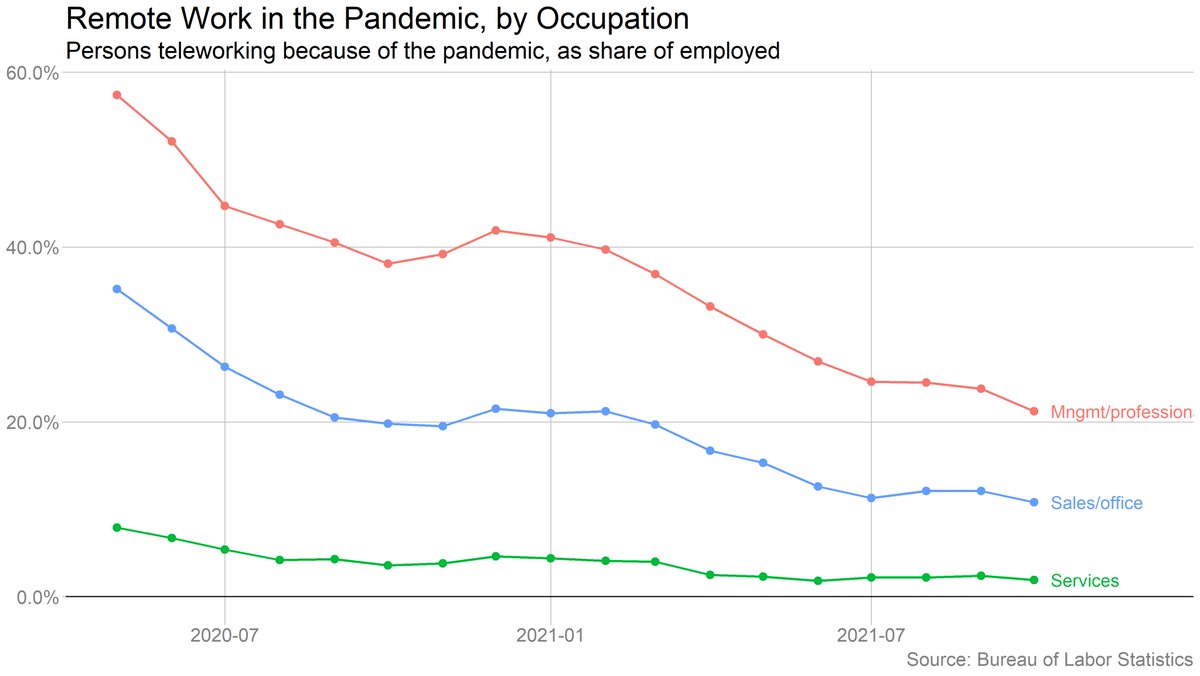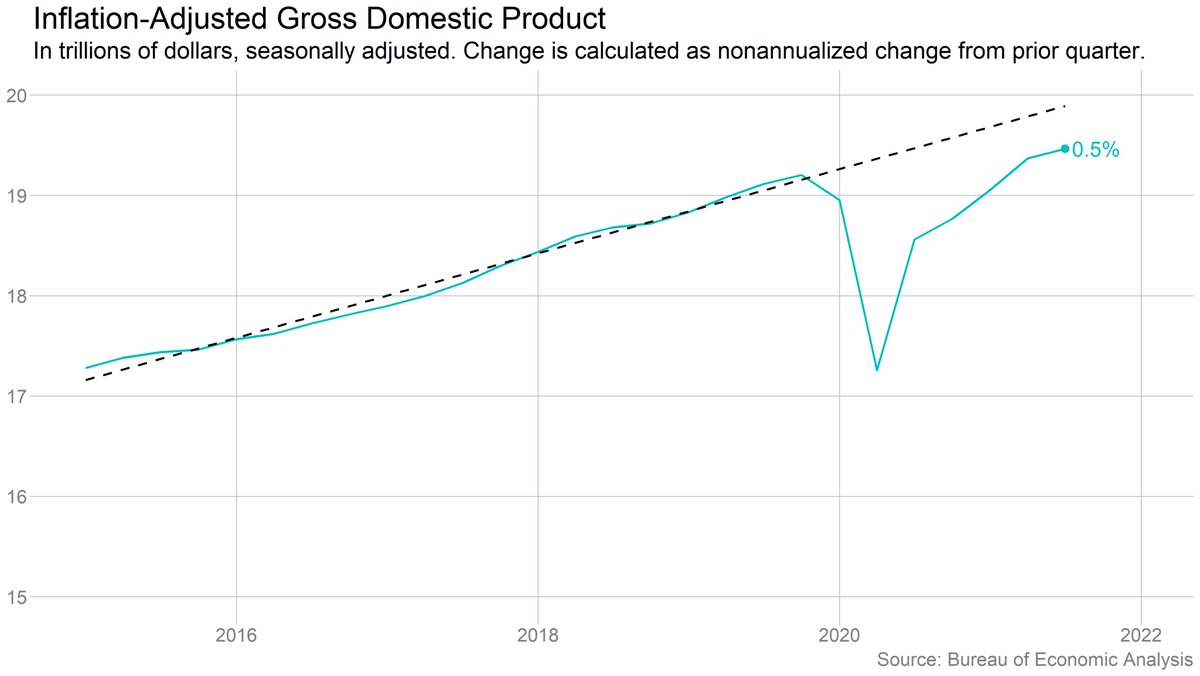
Consumer prices rose 0.8% in November, and were up 6.8% from a year earlier. That's the fastest year-over-year rate of inflation in 39 years.
Excluding food and energy, prices were up 0.5% from October and 4.9% from a year earlier.
nytimes.com/live/2021/12/1…
Excluding food and energy, prices were up 0.5% from October and 4.9% from a year earlier.
nytimes.com/live/2021/12/1…
Overall consumer prices rose 6.8% in November from a year ago. That's the fastest rate of inflation since June 1982. Helpful to see this in some historical perspective, however: 

On a month-to-month basis, price gains cooled slightly in November (+0.8%, vs +0.9% in October). But we're not seeing the quick return to normal that many forecasters were expecting just a few months ago. (Of course, that's true for many things in the economy right now.) 



Earlier this year, the year-over-year rate of inflation was misleading because it reflected "base effects" -- price declines early in the pandemic led to inflated readings a year later. But that effect is fading as we get further away from the spring distortions. 

Another way to see this is to look at the price *level* rather than the rate of change. You can clearly see that prices quickly caught up to their pre-Covid trend, and have now far surpassed it. 

Some people have suggested looking at the two-year change instead of the one-year as a way to account for base effects. I'm not a fan of this approach, as it by definition mutes whatever signal we're seeing in the latest data. But here's that chart as well: 

Inflation is wiping out wage gains. Real average hourly earnings fell in November on both a month-to-month and year-to-year basis. 

But for the lowest-paid workers, wage gains ARE keeping up with inflation. Leisure and hospitality workers in particular have seen substantial earnings increases even after adjusting for inflation. 

It's worth looking at wage levels as well. Overall average hourly earnings have now fallen below their pre-pandemic trend after adjusting for inflation, and even in leisure and hospitality, earnings are basically at their prepandemic trend. 

Important note: These hourly earnings measures are tricky to interpret. They're overall averages, which can be skewed by the shifting patterns of people entering/leaving the workforce during the pandemic. We get better data that adjusts for these changes, but only quarterly.
(Picking back up this thread after a delay for a phone call.)
Gas prices were once again a big driver of the overall CPI in November -- up 6.1% for the second straight month, and up 58% from a year earlier.
But the good news is that oil prices have fallen significantly since late October, and gas prices have already begun to edge down.

But the good news is that oil prices have fallen significantly since late October, and gas prices have already begun to edge down.


Home heating prices were also way up in November, but as @talmonsmith notes, falling natural gas prices are good news heading into winter:
nytimes.com/2021/12/07/bus…

nytimes.com/2021/12/07/bus…


Food prices are also still rising quickly, especially for meat. Ground beef up 14% y/y in November. Pork up 17%. Chicken up 9%. 



Rents are rising more slowly than overall inflation, but rental price gains are accelerating. That's a big worry for the Fed, because rents are a huge part of CPI, and the trend is unlikely to reverse quickly once it gets started. 



Similar story on "owner's equivalent rent," the CPI's hard-to-understand measure of housing costs for homeowners. 



Used car prices are on the rise again after falling earlier this fall. Up more than 30% over the past year. 



Used cars have been a major driver of overall inflation in the pandemic: Overall CPI is up 7.8% since Feb. 2020. Without used cars, it's up 6.7%. 

• • •
Missing some Tweet in this thread? You can try to
force a refresh









